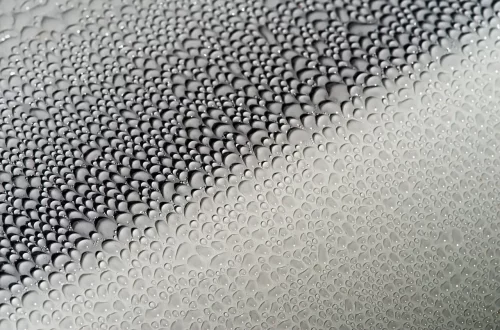
Understanding Why Your Cat Won’t Drink Water and How to Help
Cats are fascinating creatures, often displaying quirky behaviors that can leave their owners puzzled. One such behavior is their reluctance to drink water. Unlike dogs, who tend to drink readily, many cats seem to avoid their water bowls, which can raise concerns about their hydration levels and overall health. Understanding why your feline friend might not be drinking enough water is crucial for ensuring they remain healthy and happy.
Several factors can contribute to this behavior, including preferences for specific water sources, the type of water provided, and even underlying health issues. As a responsible pet owner, it is essential to be attentive to your cat’s drinking habits. Dehydration can lead to serious health problems, such as urinary tract issues and kidney disease. Additionally, cats are often less inclined to drink when their environment is not conducive to their natural instincts.
By observing your cat’s habits and making a few adjustments, you can encourage them to drink more water and maintain optimal hydration. In this article, we will explore various aspects of feline hydration, providing insights into why your cat might be avoiding water and how you can help them develop healthier drinking habits.
Identifying Your Cat’s Preferences
Every cat has unique preferences that can significantly influence their drinking habits. Understanding these preferences is the first step in addressing your cat’s reluctance to drink water. Some cats prefer fresh, running water rather than still water sitting in a bowl. This instinct can be traced back to their wild ancestors, who often sought flowing water sources for freshness and safety.
To cater to this preference, consider investing in a cat water fountain. These devices circulate water, keeping it fresh and appealing to your cat. Many cats are drawn to the sound and movement of flowing water, which can stimulate their interest in drinking. Additionally, ensure that the water bowl is clean and free from any residues or odors that might deter your cat. Regularly cleaning the bowl will help maintain its appeal.
Another factor to consider is the location of the water bowl. Cats are creatures of habit and may feel more comfortable drinking in specific areas of the house. If the water bowl is placed in a high-traffic area or too close to their food bowl, your cat might avoid it. Experiment with different locations to find a spot where your cat feels most at ease.
Lastly, pay attention to the type of bowl used. Some cats prefer shallow bowls, as deep bowls can create whisker fatigue, making it uncomfortable for them to drink. Opt for a wide, shallow bowl made from materials like stainless steel or ceramic, as these are less likely to retain odors compared to plastic.
The Importance of Fresh Water
Cats, by nature, are not great drinkers. This is partly due to their evolutionary background, as they have adapted to obtain moisture from their prey. As a result, many cats may not feel the need to drink as much water, especially if their diet consists largely of dry kibble. However, it is vital to ensure your cat has access to fresh water at all times.
Stale or contaminated water can deter your cat from drinking. Cats are notoriously sensitive to changes in taste and smell, so it’s essential to change the water daily. Make sure to rinse the bowl thoroughly to eliminate any residues that might affect the water’s appeal. Additionally, if your cat seems to prefer drinking from different sources, such as the faucet or a particular bowl, try to replicate that experience at home.
Hydration is crucial for maintaining your cat’s health. Dehydration can lead to serious issues such as urinary tract infections, kidney disease, and other organ dysfunctions. Monitor your cat’s water intake and look for signs of dehydration, such as dry gums, lethargy, or reduced activity levels. If you notice any concerning signs, consult your veterinarian for further guidance.
Incorporating wet food into your cat’s diet can also help them maintain hydration levels. Canned cat food typically contains a high percentage of moisture, which can significantly contribute to their daily water intake. This is particularly beneficial for cats that are reluctant to drink water from a bowl.
Health Concerns That May Affect Drinking Habits
Sometimes, a cat’s refusal to drink water can be a sign of underlying health issues. It’s essential to be vigilant and recognize any behavioral changes that may indicate a health concern. Conditions such as dental disease, kidney problems, or urinary tract infections can make drinking painful or uncomfortable, leading your cat to avoid water altogether.
Dental issues can cause significant discomfort and may prevent your cat from drinking normally. If you notice any signs of oral pain, such as reluctance to eat, drooling, or pawing at their mouth, it’s crucial to schedule a veterinary appointment. Regular dental check-ups can help maintain your cat’s oral health and prevent pain associated with dental disease.
Kidney disease is another common issue among older cats. Dehydration can exacerbate kidney problems, creating a vicious cycle where the cat avoids drinking water due to underlying discomfort. If your cat exhibits signs such as increased thirst, changes in urination habits, or weight loss, consult your veterinarian for a thorough examination.
Urinary tract infections (UTIs) can also lead to changes in drinking behavior. Cats with UTIs may experience discomfort while drinking or may associate the water bowl with pain. If you observe signs of straining to urinate, blood in the urine, or frequent trips to the litter box, seek veterinary assistance immediately.
Understanding the health concerns that can affect your cat’s drinking habits is essential for ensuring their well-being. Regular veterinary check-ups can help detect potential issues early, allowing for prompt treatment and management.
Creating a Hydration-Friendly Environment
Besides addressing your cat’s preferences and health concerns, you can create an environment that encourages hydration. Cats are more likely to drink when they feel relaxed and secure, so consider these tips to foster a hydration-friendly atmosphere.
Start by ensuring that your cat has easy access to clean water at all times. Multiple water stations throughout your home can help encourage drinking, especially if your cat spends time in different areas. This setup allows your cat to drink whenever they feel thirsty, without needing to travel too far.
Consider the placement of food and water bowls. Cats often prefer to keep their food and water separate, so placing them too close together may discourage drinking. Experiment with the distance between the two to see if this makes a difference in your cat’s drinking habits.
Lighting can also play a role in how comfortable your cat feels while drinking. Ensure that the area around the water bowl is well-lit yet not overly bright or harsh. Cats tend to prefer calm and quiet environments, so avoid placing their water bowl in loud or busy areas.
Lastly, observe your cat’s daily routine and habits. Cats thrive on consistency, and changes in their environment can affect their drinking. Maintaining a stable routine can help your cat feel secure, making them more likely to drink when needed.
By understanding your cat’s needs and preferences, you can play a vital role in ensuring they stay hydrated and healthy.
**Disclaimer:** This article is not intended as medical advice. If you have concerns about your cat’s health or hydration, consult your veterinarian for professional guidance.




